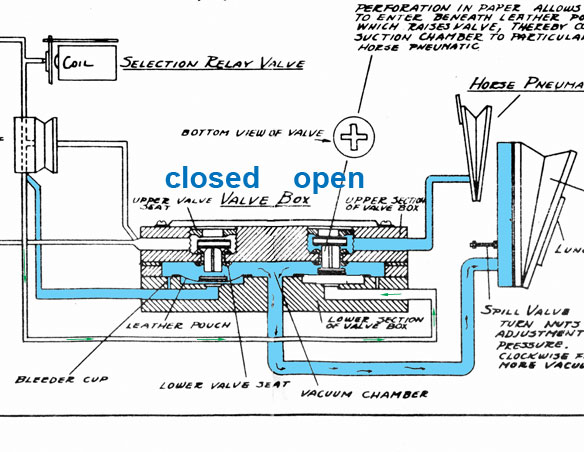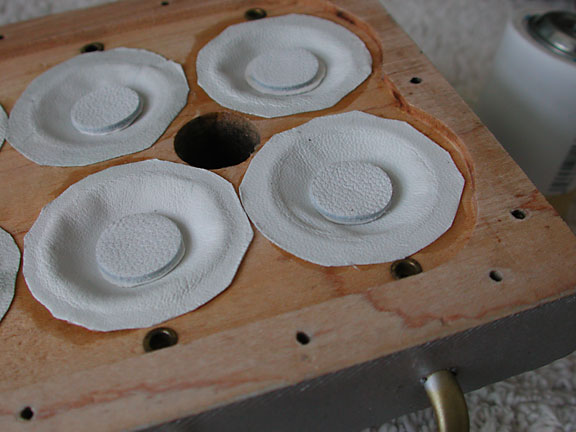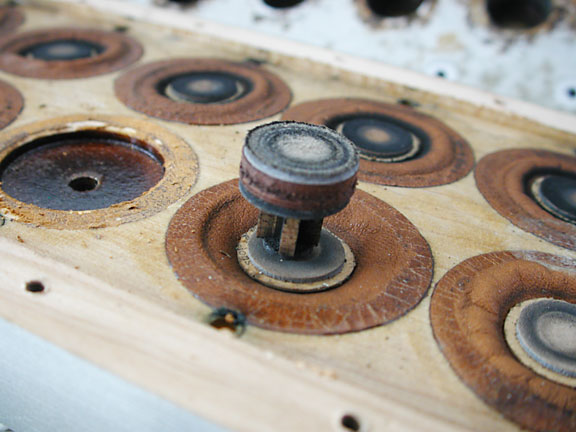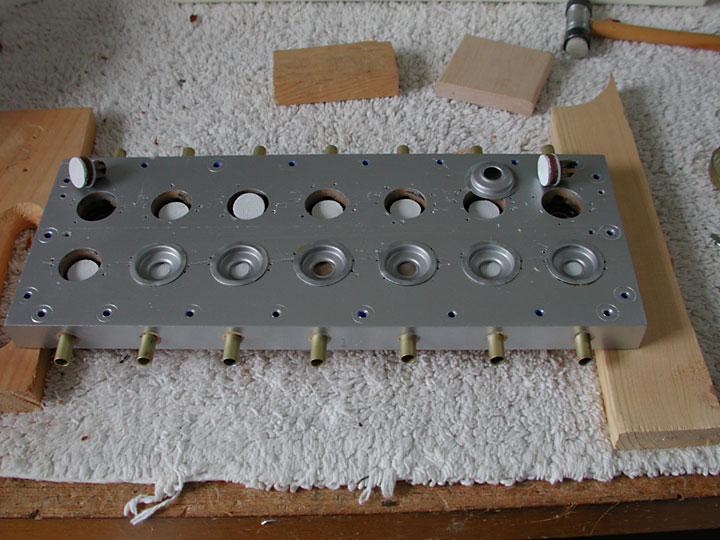Pneumatic Valves and How They Work
Pneumatic valves are commonly used in player piano mechanisms. A roll of perforated paper is drawn past a trackerbar. As the holes in the paper allow air to pass, the player piano mechanism senses the air leak and then causes a piano key to be struck. The same method is used to advance horses in the Paces Races and Evans Races gambling arcade games.
Below is a diagram of two valves, one closed and one open. The closed valve is awaiting a hole in the piano roll to pass by. The open valve sensed the open hole passing by and actualted the horse bellows, advancing the horse one step.

The pump has sucked all the air out of the main portion of the valve box. The pump is to the right of the picture and the blue shows the vacuum.
Closed Valve
The bleeder cup on the left has allowed a tiny bit of vacuum to appear in the line leading to the tracker bar. The perforated paper roll is being pulled past all the holes in the tracker bar. The leather pouch is sagging because the air above it is the same as the air below, a vacuum. Notice the valve above the leather pouch is being sucked down and is preventing any of the vacuum from escaping past the lower valve seat.
Open Valve
A hole has passed the tracker bar and allowed a small leak into the lower section of the valve box. You can see the air rushing along where the small green arrows are. This air coming in raises the leather pouch, which raises the valve up against the upper valve seat. The air above the valve is a vacuum and the air below is normal air pressure, so the valve pouch is pushed upwards, pushing on the bottom of the valve.
Now the vacuum is free to travel to the horse pneumatic, colapsing it and causing the horse to move.
Valve Return
How does the valve close again? What happens when the perforation in the paper roll moves away and the hole in the tracker bar is covered up? First the air stops leaking in. The bleeder cup sucks air slowly out of the tube running to the trackerbar, returning a vacuum and making the tube ready to sense the next perforation. Once the vacuum has returned to the lower section of the valve box, the leather pouch falls down, allowing the valve to get sucked back down to the lower valve seat. The upper valve seat opens and releases the vacuum to the horse pneumatic, allowing it to expand again.
Clearly there is a compromise between the size of the hole in the bleeder cup and how quickly the pneumatic is able to respond.
Actual Valves

Here are the leather pouches and bleeder valves. The right leather pouch is sitting above the lower pouch are and the tube seen in the picture goes to the tracker bar. The big hole in the middle goes to the pump manifold where the vacuum is created. This is the bottom half of the valve box and goes under the top half show below.

This picture shows one of the original valves sitting on top of a leather pouch. The valve seat left an impression on top of the valve and there is another seat underneath the valve. The X crosssection of the bottom of the valve allow air to pass when driving a pneumatic.

This is the rebuilt top of the new valve box. Two of the valves are going to be placed in the holes and the top valve seat attached to hold the valve in position. The tubes are connected to the horse pneumatics. This is the top half of the valve box and goes on top of the picture above.
